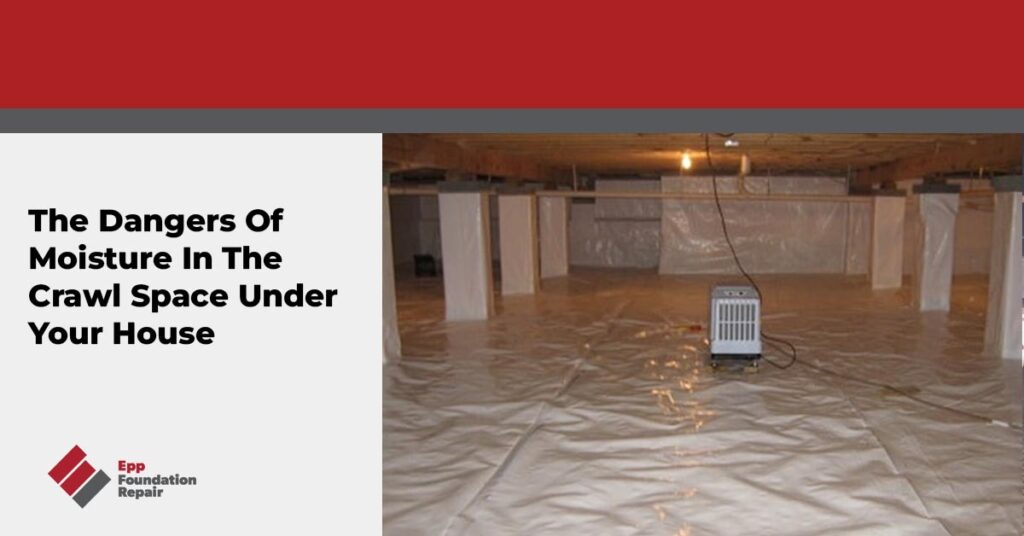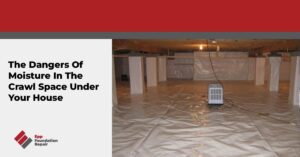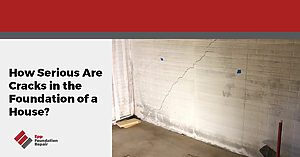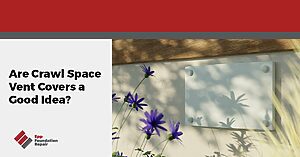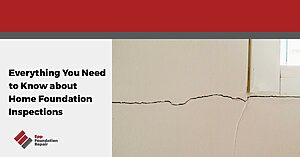Are you struggling with moisture in the crawl space under your house? If so, you’re not alone. It’s a common problem with crawl space foundations. Unfortunately, unchecked moisture in the crawl space under your house can create serious problems that can affect not only the health of your foundation but the health of anyone living in the house.
In this blog post, we’ll explore some of the dangers posed by high moisture levels in the crawl space under your house and give you information on how to prevent it. Read on for helpful information about why monitoring moisture levels in your crawl space is so important.
What Is A Crawl Space?
Homes built on crawl space foundations have an area under the house that’s anywhere from 1.5-3 feet high. While a crawl space offers easy access to the building’s plumbing and electrical systems, it’s not tall enough for an adult to stand in.
Crawl space foundations were once very popular in the US. While they’re still being built, slab foundations are more popular now because they’re less expensive. However, crawl space foundations are still the preferred choice for colder regions of the US.
The Benefits Of Having A Crawl Space Under Your House
A well-maintained crawl space can offer homeowners a wealth of benefits. For starters, it can provide convenient access to utilities, such as plumbing and electrical systems. An encapsulated crawl space (more on encapsulation below) can even provide additional storage space for seasonal items or other household goods. Crawl space foundations are also less expensive than a full basement foundation. This makes them a popular choice for homeowners who want to save money without sacrificing functionality. Overall, a crawl space foundation is a practical option for those who want easy access to the home’s utilities and need a little extra space beneath their house.
Why Crawl Space Moisture Is Bad, And Can Even Be Dangerous
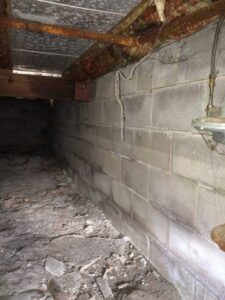
Crawl spaces are prone to moisture issues. Crawl space moisture might seem minor at first, but it can lead to serious problems. Excessive moisture can create the ideal conditions for mold and mildew growth. These fungi not only cause unpleasant odors and unsightly stains but can also trigger respiratory problems in vulnerable individuals. This happens because some air from the crawl space flows into your home’s living area. In other words, if your crawl space is full of mold, the air inside your home will be as well.
Yuck!
Moisture can also encourage wood rot and decay, weakening your house’s structural integrity. Furthermore, damp conditions attract pests like termites and cockroaches, which can damage your property and even pose health risks. Even worse, excessive moisture can create a conducive environment for radon gas, a potent carcinogen. For all these reasons, it’s crucial to address crawl space moisture as soon as possible.
Signs There’s Moisture In Your Home’s Crawl Space
Signs you might have a moisture problem in your home’s crawl space include the following:
- Your home smells musty.
- The floor above the crawl space is warped or buckling.
- There’s rust or corrosion on metal surfaces in the crawl space.
- You can see mold on the wooden structures in the crawl space.
- There’s visible moisture or pooled water in the crawl space.
- You’re having a problem with condensation inside your home.
- You’ve noticed more pests in your home lately. These might be insects or rodents. A damp crawl space attracts pests; from there, they make their way into your home’s living area.
If you notice any of the above, immediately contact a professional foundation repair contractor for a crawl space evaluation. It’s essential to promptly address any moisture-related issues in your crawl space to protect your home and your family’s health.
Three Steps To Preventing Moisture In The Crawl Space Under Your House
The best way to prevent mold growth, structural damage, and even health problems is to:
- Install a drain tile system that will divert water away from your home’s foundation.
- Encapsulate the crawl space.
- Add a dehumidifier
What is a drain tile system?
A drain tile system is a foundation waterproofing system par excellence. When it comes to keeping the ground around a foundation dry, nothing beats it.
There are two types of drain tile systems, exterior and interior. The exterior drain tile system goes around the outside perimeter of the home’s foundation at the level of the footing. The interior system goes around the inside perimeter of the crawl space or basement.
Here’s the general installation procedure for an exterior drain tile system:
- The soil around the foundation is excavated down to the footing.
- A shallow trench is dug around the foundation perimeter and lined with gravel.
- A drainage pipe with holes is placed into the trench and then covered with more gravel.
- The excavated dirt is put back.
Excess moisture in the soil will now find its way into the drainage pipe and, from there, to a sump pit. When the sump pit fills with water, a sump pump will turn on and eject the water away from the foundation.
What is crawl space encapsulation?
The next step is crawl space encapsulation which involves sealing the vents and covering the crawl space’s dirt floor and walls with a thick, vapor-retarding barrier. This keeps the crawl space dry and clean. An encapsulated crawl space can even be used to store things like tools and holiday decorations.
For more information about crawl space encapsulation, see Are There Any Negatives To Crawl Space Encapsulation?
Why add a dehumidifier?
The final step is to add a dehumidifier to ensure the moisture level in the crawl space remains low.
With these measures in place, you can rest easy knowing that your crawl space is protected from the harmful effects of moisture.
Additional Steps You Can Take To Keep Your Crawl Space Dry
There are additional measures you can take to keep your crawl space dry. These include the following:
- Clean your gutters regularly to ensure they’re not clogged with decaying leaves and other debris. This could cause water to spill over the side of your home and into the ground around the foundation.
- Use downspout extensions to carry runoff at least 4 feet away from the foundation before being released.
- If necessary, regrade the yard around your home so it slopes away from the foundation. This will keep excess groundwater from draining toward the foundation.
- Consider relocating any water-hungry flowers or shrubs currently next to the house.
If you’re concerned about moisture in the crawl space under your house, contact us today to schedule a crawl space evaluation. If we find a problem, we’ll give you a repair estimate. Since 1994, we’ve helped clients in Omaha, Lincoln, Kearney, Southeastern Nebraska, Northwestern Missouri, and parts of Northeastern Kansas with foundation repair, basement waterproofing, crawl space encapsulation, and concrete leveling for their homes.

